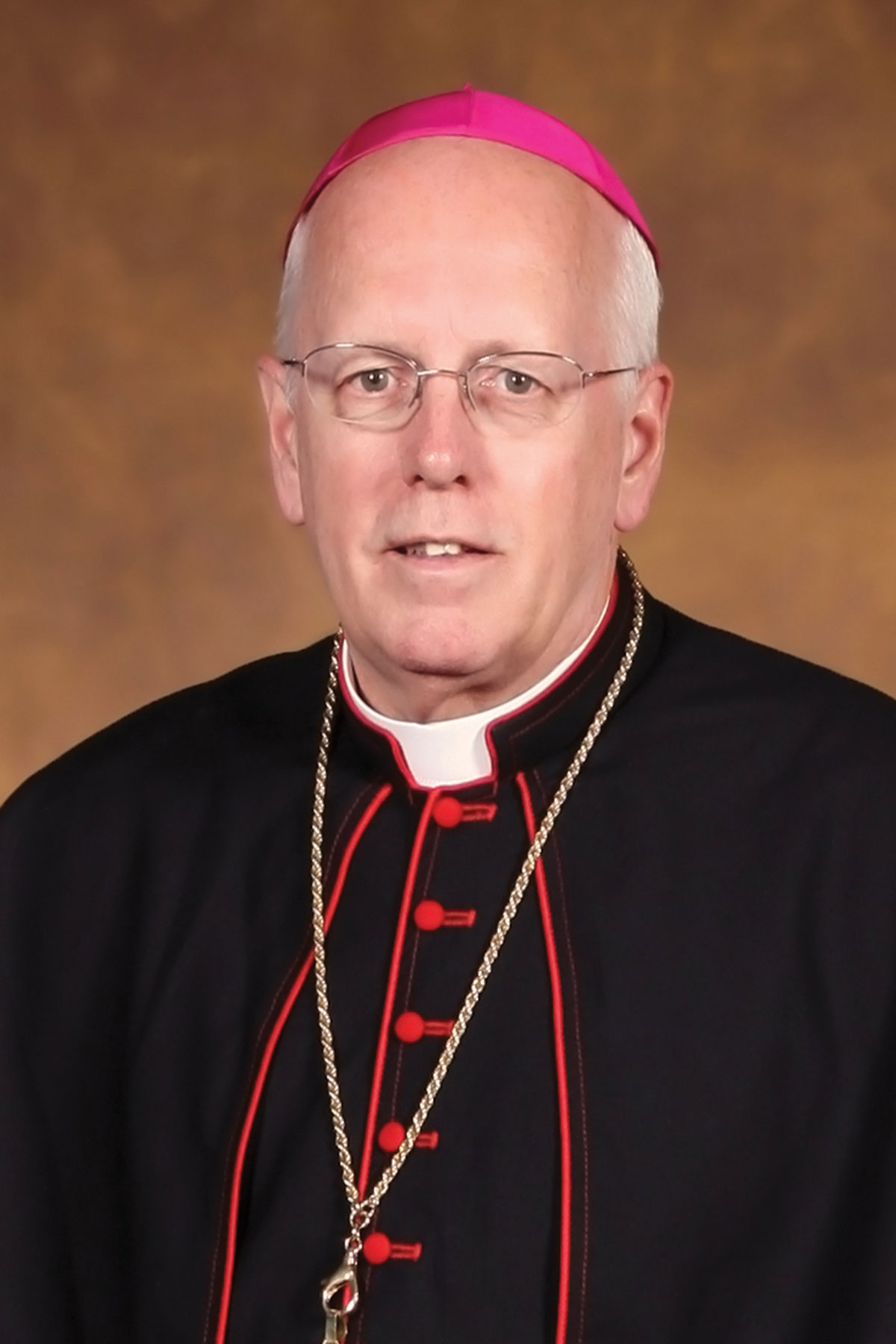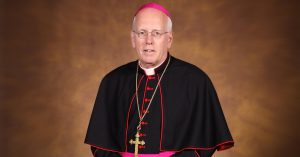
As these words are written I along with fifty other hardy souls have just returned from a pilgrimage to Poland to recall and honor the life and legacy of Saint John Paul II on the occasion of the 40th anniversary of his election as Pope. This privilege immediately followed the annual Clergy Days at which priests and deacons gather for prayer, continuing education and social time together, perhaps my last as the local bishop. There were many special moments at each which have raised up much for reflection and prayer, too much to be included in this brief writing.
Certainly hovering over Clergy Days were the renewed charges of clergy child abuse by some priests and the failure of some bishops to deal with them appropriately. This has been compounded by the revelation of abuse of power at the minimum and the baffling promotion and likely cover-up or at least insensitivity of allegations against now Archbishop Theodore McCarrick. My statements on these matters are posted on the diocesan website: sfcatholic.org.
This renewed scandal allows me to reassure you that victims are invited to come forward and will be listened to with sensitivity and confidentially. Their allegations will be taken seriously by the diocese with appropriate support offered. All allegations will be reported to civil authorities. Offending clerics and laity acting in the name of the Church, including bishops, will be held to account. This topic will be the main focus when the bishops of the United States gather in Baltimore later in November.
It also reminds us of our need to be ever observant for those fallen persons, clergy or not, who might prey on the young and vulnerable anywhere which our safe environment program seeks to help assure. Some lament having to undertake this training program every year, but experience makes clear that we ought never to become complacent. One child molested is too many by anyone in family, in sporting, or in the Church at any time.
Archbishop Fulton Sheen, an early influence in my life, reminded me of priestly responsibility and role in confronting evil when he wrote:
“As shepherd so the sheep; as priest so the people. Priest victim leadership begets a holy Church. Every worldly priest hinders the growth of the Church; every saintly priest promotes it. If only priests realized how their holiness makes the Church holy and how the Church begins to decline when the level of holiness among priests falls below that of the people.”
This stark statement of reality applies to all aspects of our privileged priestly life. How to heal and move on from these public sad times in part is dependent on us priests. How we receive and treat others at all times has ramifications in the lives of those who come to us. As Saint Mother Teresa said so often, we ought to see Jesus in all who come our way and treat them as we would him, with respect and dignity.
Living with the heaviness of clergy sexual abuse and the rightly calling to account of us bishops, what a life-giving experience it was to walk physically and spiritually where Saint John Paul II spent so many years as a youth, as lay young man, as seminarian, and as priest and bishop.
As I told the pilgrims, if one word catches the essence of Saint John Paul II for me it is that of hope, especially hope in the name of Jesus Christ. He wrote:
“We cannot live without hope. We have to have some purpose in life, some meaning to our existence. We have to aspire to something. Without hope, we begin to die.”
That hope grew out of his experience enveloped with the tragic history of Poland imposed by tyrant conquerors and by its impact on him personally.
The influence of the evil one resulted in the destructive web of horrific disrespect for life, sadistic cruelty, intentionally imposed suffering and the goal of human cleansing. Saint John Paul II experienced this in his own life and in the community he grew up in and loved until God welcomed him to his heavenly home.
His mother died when he was young. His only sibling ten years older, who became a doctor, died in his twenties. His father who seemed to be the glue that brought perspective to these personal losses also died when Karol Wojtyla was a very young man.
With loss of family Karol found a mother and reassurance in the Blessed Mother. He wrote:
“The woman of faith, Mary of Nazareth, the Mother of God, has been given to us as a model of pilgrimage of faith. May we learn surrender to God’s will in all things. From Mary we learn to trust even when all hope seems gone.”
She is our mother as well and from her when we trust in Christ we too can be hope-filled.
Under the Nazis, the future Pope was conscripted into working hard labor where he saw cruelty first hand. As a result He made the powerful declaration we in our competitive and 24/7 days should remember:
“Work is made for man, not man for work.”
“Man and woman are made in the image and likeness of God. So people may never be regarded as mere objects, nor may they be sacrificed for political, economic or social gain. We must never allow them to be manipulated or enslaved by ideologies or technology. Their God-given dignity and worth forbid this.”
He was forced under the life-threatening rule of the Nazis to study in an undercover seminary. Then once the Nazis were defeated, under the different but just as deadly tyranny of the Soviet communists, his ministry was restricted. As a young priest he discovered a great insight about the unique role and responsibility of priests. He wrote:
“If we take a close look at what contemporary men and women expect from priests we will see that in the end they have one expectation: they are thirsting for Christ. Everything else – their economic, social, and political needs can be met by any number of people. From the priest they ask for Christ.”
In this day when priests are asked to engage in so many secular pursuits which are fully in the competence and responsibility of the laity, we ought not to neglect this profound, privileged and prime role we were ordained to offer: provide for those thirsting for Christ.
John Paul II was elected Pope at the age of 58 and lived a vigorous early life reveling in God’s creation especially by mountain climbing, kayaking, skiing and prayer-filled walking in nature. He traveled the world like no Pope before him and survived an assassination attempt thanking Our Lady of Fatima for saving his life. Then in his later years his health grew fragile and his physical abilities faltered. He in a very public way witnessed to us redemptive suffering.” He wrote:
“Death itself is anything but an event without hope. It is the door which opens wide to eternity and for those who live in Christ, an experience in His Death and Resurrection.”
Saint John Paul II is known for his intellect and many writings. These are worthy of our study. Yet deep down he was deeply spiritual, a mystic some have said.
The core of his message and his person never changed, the message he offered when he for the first time appeared on the Vatican balcony upon his election: “Be not afraid. . . Open wide the doors of Christ.”
It is a message for our times as well. In Christ is our hope. With Him at our side we never fear.
Saint John Paul II, thank you for your courage, witness of fidelity to Christ and his Church, and being for us beacon of hope for us all. Pray for us.

